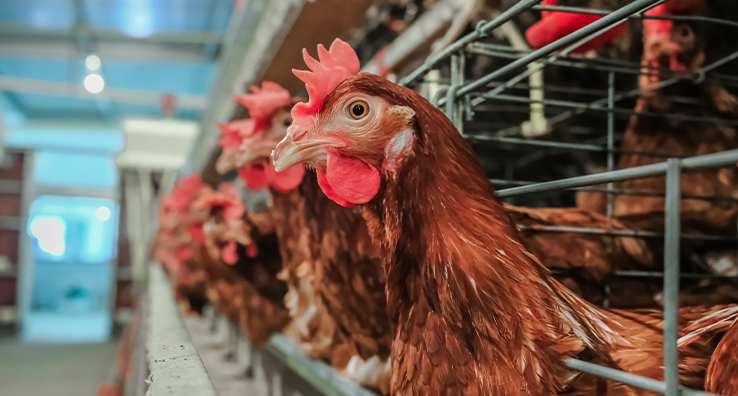Update to Poultry Animal Welfare Library

Intertek Alchemy strives to keep our Poultry Animal Welfare library aligned with current industry guidelines & regulatory standards. That’s why we’re excited to announce a new complementary course and five updated courses to ensure compliance with National Chicken Council (NCC) Guidelines for the United States and Canada. In addition, these new and updated courses are available in English, Spanish, and now Canadian French.
New Course: “Monitoring Birds During Grow Out”
Because of the new guidelines, Intertek Alchemy is adding a complimentary new course, “Monitoring Birds During Grow-Out”, to your poultry library. In this course you will learn:
- How to monitor the diet and feeding habits during grow-out phase
- Methods of maintaining living conditions during the grow-out period
- Process of providing a shelter that protects the flock
- The importance of flock inspections in your facility
Now Available: Five Updated Poultry Courses
What’s more, Intertek Alchemy is pleased to provide you with five updated Poultry Animal Welfare courses that reflect the changes in the NCC guidelines. Also, we’ve made these courses more concise to minimize your frontline workers’ time off the floor. This updated course covers topics such as:
- Demonstrating how to properly handle chicks in a hatchery
- Explaining how to properly hold a bird
- Identifying the times when euthanasia may be performed
- Recognizing best practices for transporting birds
- Providing methods for humanely practicing live bird processing
Below are the course codes, titles and descriptions for these new and updated courses.
UDM32- Monitoring Birds During Grow Out (New)
The grow out department is where birds live from the time, they are chicks, to the time they reach processing weight. This course explains how to monitor a flock during the grow out phase and identifies the living conditions which must be monitored during this time. It also covers the preferred stocking density and lightning conditions that should be maintained.
UDM31- Hatchery Operations (Updated)
Even though an animal may be raised for food, it is a living creature and deserves to be treated humanely and with respect. This course shows how to properly handle chicks in a hatchery, and where to look for chicks that have escaped. It also explains how injuries may occur, and how to humanely handle chicks that are injured.
UDM33- Proper Catching and Handling Methods (Updated)
Before birds are processed for food, they must be hatched, grown, and fed. Sometimes they have to be picked up and moved during this process, and it’s important that they are handled properly. This course shows how to properly catch and hold and live bird, and how to load birds into a cage.
UDM34- Humane Euthanizing Practices for Poultry (Updated)
When a bird is sick or injured, it can affect the health of other birds in the flock. For that reason, it needs to be separated from other birds, and humanely euthanized so that it will not suffer any longer. This course identifies the times when euthanasia may be performed, and the acceptable methods of euthanasia. It also explains the process of euthanasia by Cervical Disarticulation.
UDM35- Poultry Welfare During Transportation and Receiving (Updated)
Once a flock has grown, it must be transported to a processing facility. This will usually mean traveling by truck, and it’s very important that birds are handled properly during all these activities. This course explains how to handle birds before and during travel, and when they arrive at a processing facility. It also offers tips for how to inspect birds, and how to properly unload cages.
UDM36- Humane Practices for Live Bird Processing (Updated)
Live bird processing is the last stage in the bird’s lifecycle, and every effort must be made to make their deaths as quick and painless as possible. This course shows how to place a bird on a shackle line, and explains how birds are stunned prior to processing. It also offers tips for how to monitor birds in the processing department.



Comments